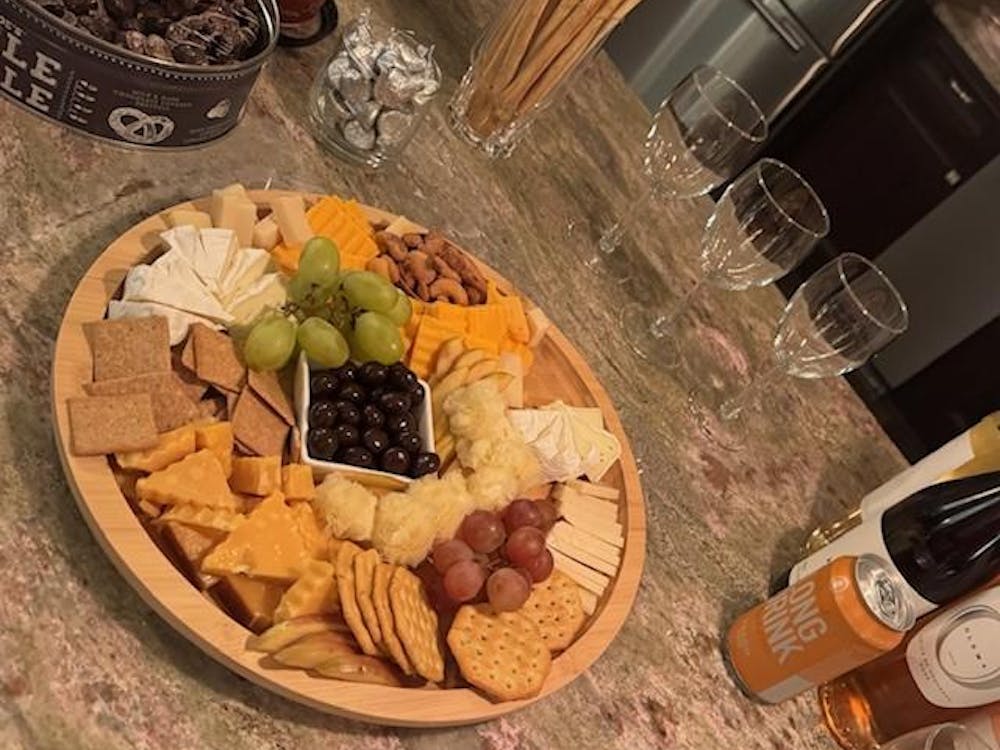As a young boy, Jeffrey Marcus would pay visits to his uncle in Brooklyn Heights, where the two would marvel together at the surrounding New York City architecture.
Marcus' uncle would give him books with beautiful pictures of architecture from around the world.
"He was really influential early on in my life," Marcus recalled, saying that his uncle sparked his initial interest in architecture.
Last Wednesday, Marcus, now a third-year Architecture student, was presented with something much more inspiring than a book: a prestigious Faculty Senate Harrison Undergraduate Research Award.
At a ceremony held in the Rotunda's Dome Room, Marcus, along with 26 other undergraduate students and their mentors, was honored for his "outstanding undergraduate research proposal."
Marcus' idea for his research proposal stemmed from his interest in a series of essays he read, entitled "Architecture of Fear." The essays detailed the "psychological effects that buildings can have upon people."
In light of recent incidents like the 1995 Oklahoma City bombing and the 1998 bombings of U.S. embassies in Kenya and Tanzania, Marcus began to research and study their psychological effects.
In particular, he is interested in the contrast between imposing, important buildings like embassies and the message of openness and friendship they mean to convey. His research this summer will focus on the difficult task architects of embassies and public buildings have of balancing "increased security with the desire to maintain democratic openness," Marcus said.
Each winner received a grant of between $1,800 and $3,000 to aid in further pursuit of their research topics, with an additional $1,000 given to each student's faculty mentor.
Marcus, from Westchester County, New York, decided to apply for the award in the fall.
"It seemed like one of those golden opportunities that doesn't come along that often," he said.
Marcus is especially interested in the design of the U.S. embassy in Lima, Peru. Although the building successfully reflects the ancient traditions of the Peruvians, the structure essentially is a "huge building made of stone," he said, noting the building's very secure stone structure.
But it is "so imposing," he added.
In contrast, embassies designed in the 1950s and 60s, with enormous glass windows, were meant to create a feeling of openness and comfort. But in reality, they pose a tremendous security threat and are much harder to protect. Marcus is interested in how architecture can portray an image of accessibility while maintaining a high security standard.
Judith Kinnard, Marcus' faculty advisor and architectural theory and ethics professor, helped with his proposal.
Marcus chose Kinnard as his mentor mostly because she is "very knowledgeable in current architectural references."
She aided most in the formulation of the research proposal by suggesting buildings to study and also helping with application details.
Thanks to his scholarship, Marcus plans on travelling to several embassies this summer, including the U.S. embassy in Ottawa, Canada.
The structure of the embassy in Ottawa, designed by David Childs, reflects a "perfect example of the balance between openness and security," Marcus said.
Marcus also hopes to visit embassies in Peru, Venezuela and Washington D.C.
After this continued study, Marcus said he hopes to one day "design an embassy of [his] own," a project which he considers to be an exciting challenge. "Embassies are a distinct type of building," he said, adding that they have very different specifications and requirements than the structures he has studied in the Architecture School.
Although Marcus still is undecided as to the ultimate focus of his architectural studies, he is excited about continuing his research.
"Maybe this can be my [niche] ... I definitely see it as a possibility," he said. "There is a very good chance I could carry this project out in the future."
One hundred fifty-seven undergraduates applied for the Harrison Award, and the Faculty Senate faced the daunting task of selecting the 27 award recipients, who were notified by e-mail Jan. 15.
"I was just smiling because of the award ... and because I had my summer plans secured," Marcus said.
Not only are his plans "a good thing" with respect to his future career in architecture, they are "actually what I want to do," he said.
Wednesday's ceremony was highlighted with speeches by several award winners, whose research topics ranged from socially related issues to more scientific oriented matters.
At the ceremony, Marcus was able to meet contacts related to his project. "Everyone was really excited about one another," he said.
Although the Harrison Fund Awards have "recognized exceptional faculty teaching and academic leadership" over the past several years, this was the first time awards had been given to undergraduate students.
"I hope it becomes an annual tradition," Marcus said. "I hope people keep applying ... it's a great opportunity to explore things we might not otherwise get to with our demanding academic schedules."






